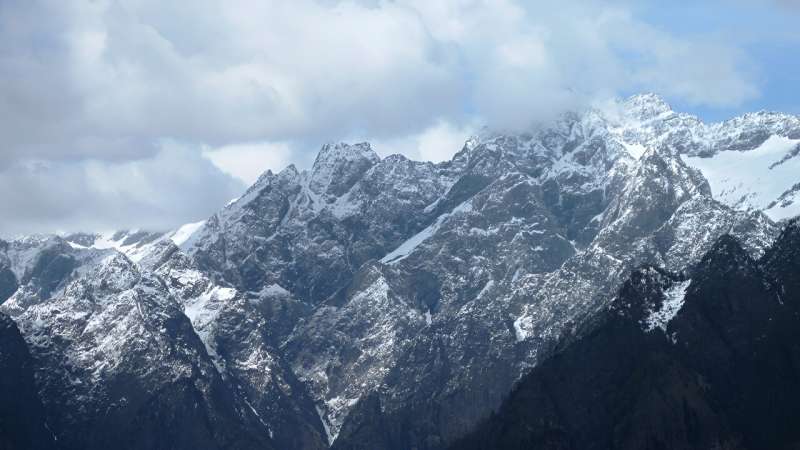This article has been reviewed according to Science X's editorial process and policies. Editors have highlighted the following attributes while ensuring the content's credibility:
fact-checked
peer-reviewed publication
trusted source
proofread
Study projects how mountain climate systems will change with rising carbon dioxide

Mountains create their own weather or climate systems by changing airflow and precipitation patterns. Orographic, or mountain-influenced, precipitation occurs as moisture-laden air rises over the high topography; the air cools, condenses, and releases water; and the atmosphere warms with latent heat. But as the world warms and emissions of greenhouse gases such as carbon dioxide (CO2) increase, predicting changes in mountain precipitation is becoming more complex.
In a new study, Kad and team fill a knowledge gap by projecting how mountain precipitation will change with global warming in response to rising CO2. The study is published in Earth's Future.
In previous work, mountain precipitation was predicted to increase with global warming, because atmospheric moisture rises along with temperature. However, observations in many regions over the past few decades have shown varying weather patterns in mountainous areas.
Global climate models divide Earth's surface into a 3D grid, and the smaller the size of the grid cells, the higher resolution the results.
To better account for the complex orographic precipitation changes with increasing CO2, the researchers used the Community Earth System Model (version 1.2.2), which has a high resolution of 25 kilometers (meaning the grid cells measure 25 kilometers across horizontally). This allowed the team to input details about the local conditions, including topography and surface roughness—along with information about wind patterns, moisture sources, and temperature—to run global simulations spanning the next century.
Their projections found that mountain regions warm more in response to CO2 than the global mean, and that doubling CO2 levels would lead to a 3.44°C temperature increase compared to present-day, while quadrupling CO2 levels would lead to a 7.35°C increase.
The researchers discovered that changes in precipitation patterns are most pronounced over mountains in low-latitude regions, especially over their summits and steep terrains.
They concentrated on five low-latitude mountain ranges, in New Guinea, East Africa, the Himalayas, Central America, and the Central Andes. New Guinea, East Africa, the Eastern Himalayas, and the windward side of the Central Andes saw more precipitation in response to increased CO2 levels. Drier conditions occurred in Central American mountains and the leeward side of the Central Andes.
The researchers propose that the mixed precipitation patterns were attributable to a feedback mechanism. High levels of humidity in a mountain terrain lead to upward air movement, which enhances heating and precipitation, which then causes more humidity. Conversely, a lack of moisture means less ascending air motion, less precipitation, and a continued lack of moisture.
They add that further investigations into mountain meteorology would likely add additional insights into mountain hydrology, and that this research has far-reaching implications for ecosystem and societal health over the next century.
More information: Pratik Kad et al, Projected Changes in Mountain Precipitation Under CO2‐Induced Warmer Climate, Earth's Future (2023). DOI: 10.1029/2023EF003886
Journal information: Earth's Future
Provided by American Geophysical Union
This story is republished courtesy of Eos, hosted by the American Geophysical Union. Read the original story here.




















